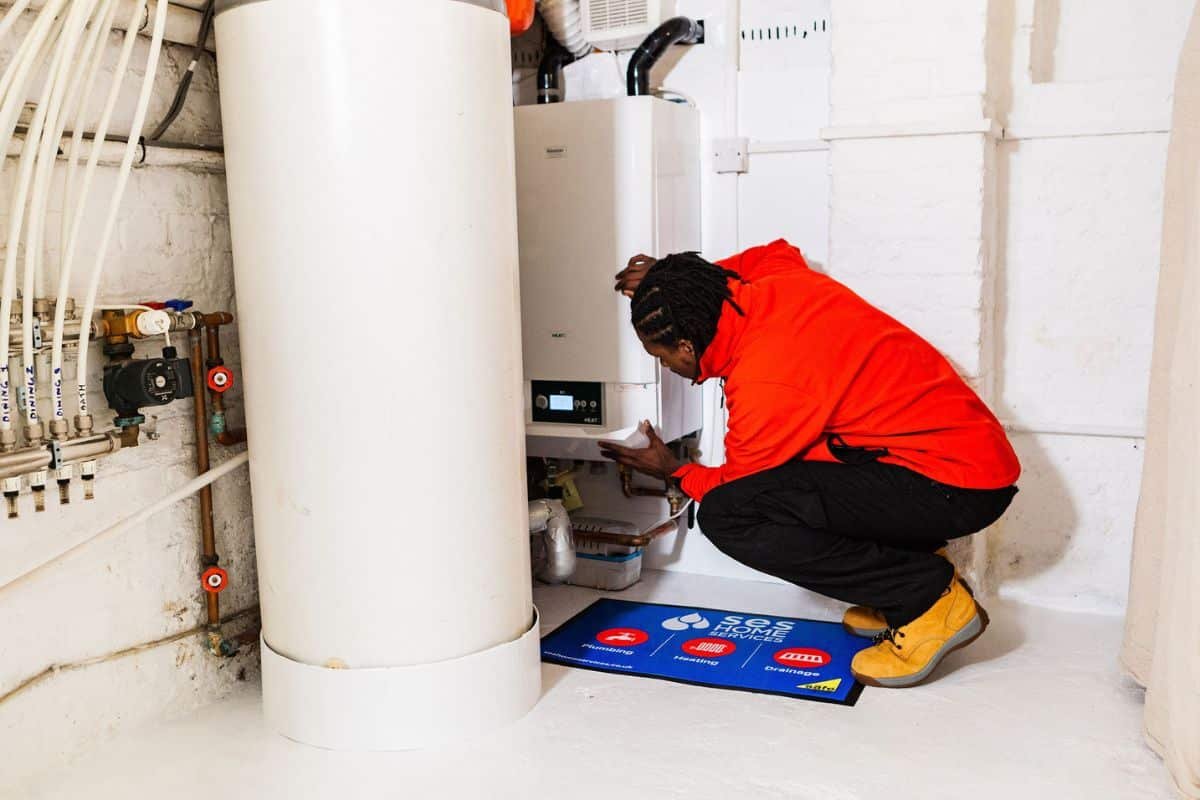
Understanding and Maintaining the Optimal Home Boiler Pressure
Home boilers play a crucial role in providing warmth and hot water to our homes. To ensure their efficient and safe operation, it’s essential to monitor and maintain the correct boiler pressure. Boiler pressure is a key factor in the functioning of a heating system, and understanding what the optimal pressure should be is vital for homeowners.
Table of Contents
ToggleWhat is Boiler Pressure?
Boiler pressure refers to the force of the water or steam within a boiler system. It is measured in units of pressure, typically in bars or psi (pounds per square inch). The pressure in a boiler is crucial because it affects the efficiency and safety of the heating system.
Optimal Boiler Pressure:
The optimal boiler pressure can vary depending on the type and model of the boiler, but in general, it typically falls within the range of 1 to 1.5 bars. Most manufacturers provide specific guidelines for the recommended pressure settings for their boilers, so it’s essential to consult the user manual or contact the manufacturer for precise information.
Low Boiler Pressure:
Low boiler pressure is a common issue that homeowners may encounter. If the pressure drops below the recommended range, it can lead to reduced heating efficiency and potential damage to the boiler. Common causes of low boiler pressure include water leaks in the system, bleeding radiators, or issues with the pressure relief valve.
To address low boiler pressure, homeowners can take the following steps:
Check for Leaks
Checking for leaks in your home heating system is a crucial aspect of boiler maintenance. Leaks can lead to a drop in boiler pressure, and if left unaddressed, they can cause inefficiencies in the heating system and potentially damage the boiler. Here’s a guide on how to check for leaks and why they can result in low boiler pressure:
How to Check for Leaks:
1. Visual Inspection:
Begin with a visual inspection of the entire heating system, including the boiler, pipes, and radiators. Look for any visible signs of water, such as puddles or damp spots.
Check around the boiler itself, paying attention to pipe connections, valves, and the base of the unit.
2. Examine Radiators:
Inspect radiators for signs of water leakage. Look for damp areas at the connections, valves, and along the length of the radiator.
If you notice any corrosion or rust on the radiator, it may be an indication of a slow leak.
3. Pressure Gauge Reading:
Monitor the pressure gauge on the boiler. If you observe a significant and rapid drop in pressure, it could be indicative of a leak in the system.
4. Listen for Hissing Sounds:
A hissing or bubbling sound near the boiler or pipes may suggest the presence of a leak. Listen carefully in quiet surroundings to detect any unusual noises.
5. Check the Expansion Tank:
Inspect the expansion tank for any signs of water around its base. A leaking expansion tank can contribute to low boiler pressure.
Bleed Radiators
Air trapped in the radiators can lead to a drop in pressure. Bleeding the radiators releases any trapped air, helping to restore the proper pressure.
Steps to Bleed a Radiator:
1. Turn Off the Heating System:
Before you start bleeding the radiator, ensure that the heating system is turned off. This prevents hot water from spilling out during the process.
2. Identify Which Radiators Need Bleeding:
Check each radiator in your home for cold spots or uneven heating. If a radiator feels cold at the top but warm at the bottom, it may have trapped air and need bleeding.
3. Locate the Radiator Valve:
Find the valve at the top of the radiator. This valve is typically located on one side and may be covered by a plastic cap. Some valves require a radiator key, while others can be opened with a flat-blade screwdriver.
4. Prepare for Bleeding:
Place towels or a cloth under the radiator valve to catch any water that may escape during the bleeding process. Keep a small container handy to collect any water.
5. Use the Radiator Key or Screwdriver:
Insert the radiator key or screwdriver into the valve. Turn the key or screwdriver counterclockwise to open the valve. You should hear a hissing sound as the air escapes.
6. Wait for Water to Come Out:
Keep turning the key or screwdriver until you see water starting to drip out. This indicates that all the trapped air has been released, and water is flowing freely.
7. Close the Valve:
Once water flows consistently without air, close the valve by turning the key or screwdriver clockwise. Be careful not to overtighten.
8. Check the Pressure:
After bleeding the radiator, check the boiler pressure gauge. If bleeding the radiator has caused a significant drop in pressure, you may need to repressurize the system following the manufacturer’s instructions.
9. Repeat if Necessary:
If you have multiple radiators with trapped air, repeat the process for each one.
10. Turn the Heating System Back On:
Once you’ve finished bleeding all the necessary radiators and checked the pressure, you can turn the heating system back on
High Boiler Pressure:
High boiler pressure can be just as problematic as low pressure. If the pressure exceeds the recommended range, it may trigger the boiler’s safety mechanism and result in system shutdown. High pressure can be caused by a variety of factors, including a faulty pressure relief valve or a malfunctioning expansion vessel.
To address high boiler pressure, homeowners can take the following steps:
Check Pressure Relief Valve
Ensure that the pressure relief valve is functioning correctly. If it’s faulty, it may need to be replaced by a qualified technician.
Vent Radiators
If bleeding the radiators doesn’t resolve the issue, excess pressure can sometimes be released by venting air from the radiators.
Consult a Professional
If the problem persists or if homeowners are unsure how to address the issue, it’s crucial to seek the expertise of a qualified heating engineer or technician.
Conclusion
Maintaining the optimal boiler pressure is essential for the efficient and safe operation of your home heating system. Regular checks, prompt identification of issues, and appropriate action can help homeowners keep their boilers operating smoothly.
When in doubt, always refer to the manufacturer’s guidelines and consult with a professional to ensure the long-term performance and safety of your home boiler.






